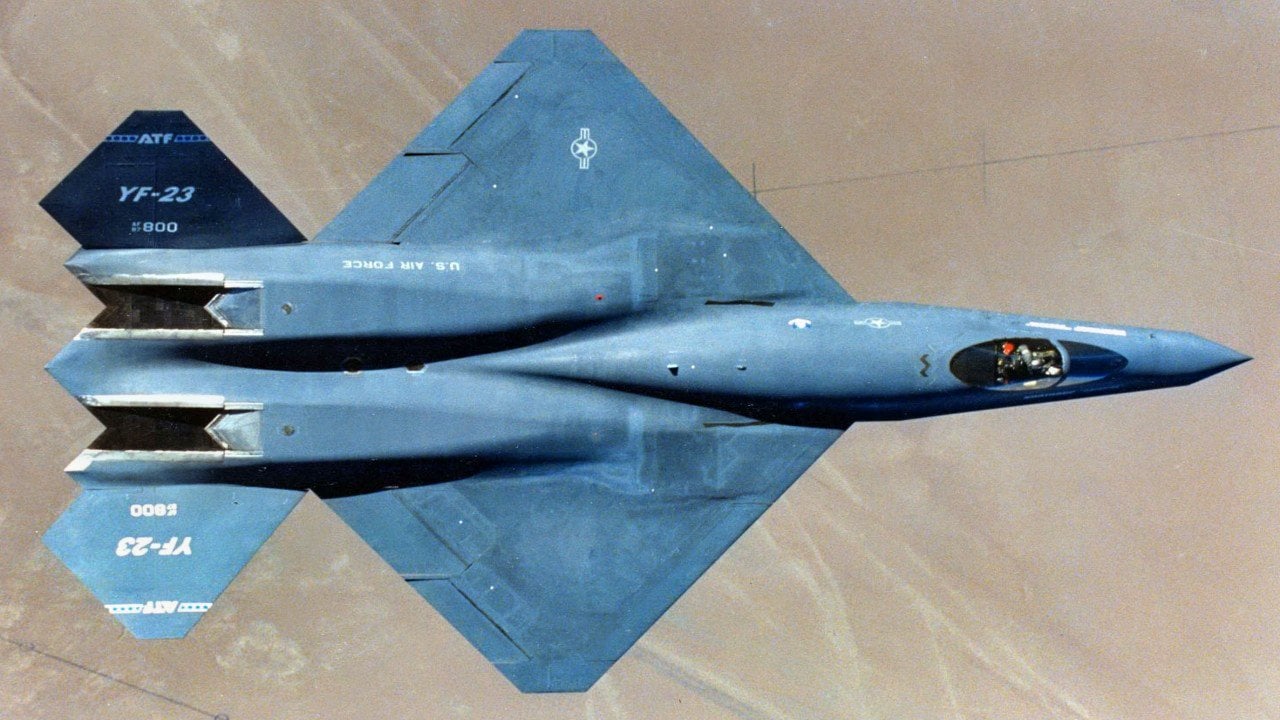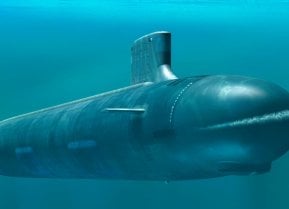YF-23: This Stealth Fighter Legend Just Won't Fade Away
The Northrop Grumman YF-23 has attained something of a mythical status among aviation enthusiasts – because of the jet’s performance and because only two were ever made.
The Northrop Grumman YF-23 has attained something of a mythical status among aviation enthusiasts – because of the jet’s performance and because only two were ever made.
During the Cold War’s crescendo, in the 1980s, the US was engaged in a weapons development race with the soon-to-collapse Soviet Union. Despite the recent development and production of fourth-generation fighters like the F-14, F-15, and F-16, the US feared the Soviet’s ability to produce high-quality aircraft. Accordingly, the US was urgent to stay ahead of the curve, and to beat the Soviets in fielding the world’s first fifth-generation fighter.
The culmination of the US’s urgency to create a fifth-generation fighter was the Advanced Tactical Fighter (ATF) program, which attracted two bids. The first bid, Lockheed’s YF-22 would win the bid and enter production as the F-22 Raptor. The second bid, Northrup’s YF-23 of course lost the bid, was never produced, and entered the mythology of aviation history. But nearly a quarter-century after losing the ATF bid, the YF-23 was reportedly almost revived, when an American ally needed an advanced fighter to face a rising threat.
Japan and the YF-23
Japan has been soliciting foreign partners for help in developing the F-X program, which Japan hopes will become the island nation’s first domestically developed stealth fighter jet. But some observers believe that the F-X program could be “a resurrection of sorts” for the YF-23.
“In 2018, Tokyo’s inquiries to potential partners in its [F-X] stealth fighter program reportedly received an enthusiastic response from Northrop-Grumman,” Sebastian Roblin reported back in 2018. “While Northrop might seek to revive the YF-23, [it is] more like that it would offer unique aspects of the airframe and engine design which might then be integrated with new or existing Japanese technologies.”
Why? Because certain elements of the YF-23, which is a thirty-year old airframe, are now outdated. Particularly the Radar Absorbent Material coatings and the avionics – two technologies that have advanced significantly since the 1990s. “Still, the Japanese Self Defense Force might prefer to start with the basis of an existing and tested airframe and subsequently improve upon it, instead of starting from scratch,” Roblin reported years back.
Ahead of its time
While a resurrected YF-23 would need some upgrades, the jet is only being considered now, in the 2020s, because the thing was so ahead of its time in the 1990s. The YF-23 was ahead of its time because, when designed, the US Air Force had an idea of what air combat would look like in the future – and demanded specifications that would be equipped to compete in air combat of the future.
The first element that aircraft designers demanded of the YF-23 was stealth. At the time of the ATF, stealth technology was relatively new. The US did have stealth aircraft in the inventory. Both the F-117 Nighthawk and the B-2 Spirit were stealth aircraft. But the US lacked a stealth fighter. (Note: despite the Fighter (‘F’) designation, the F-117 was an Attack (‘A’) aircraft, given an F-designation to attract fighter pilots to the new airframe.

The benefits of stealth technology are obvious: the ability to operate in protected airspace without alerting enemy air defenses. As air defense technology – both detection radar and surface-to-air missiles – become more sophisticated, it becomes harder for non-stealth aircraft to survive in contested airspace – which makes it difficult to contest the contested airspace and gain air superiority. Stealth aircraft increases the likelihood of survivability in contested airspace and was a crucial component for a fifth-generation fighter.
The second element that designers demanded of the YF-23 was supercruise, which allows an aircraft to gain and maintain supersonic speed without the use of afterburners. The benefit of supercruise is fuel efficiency. Afterburners require intensive fuel consumption (afterburners are achieved when fuel is spit into the engine exhaust, causing an ignition that increases propulsion).

So, in a situation where an aircraft uses afterburners to intercept an enemy aircraft, the intercepting aircraft runs a real risk of consuming so much fuel that it does not have enough fuel left to engage the intercepted aircraft – which defeats the purpose of intercepting the aircraft in the first place. With supercruise, the intercepting aircraft can, in theory, intercept the enemy aircraft without burning through the fuel required for afterburners, and still have enough fuel left over to engage in Air Combat Maneuvers (ACM), also known as dogfighting.
YF-23: What could have been
The YF-23 was a special airplane, capable of stealth and supercruise. The jet lost the ATF bid, but some contend that the YF-23 was more capable than Lockheed’s winning YF-22 entry. However, Northrup demonstrated their YF-23 aircraft more conservatively than Lockheed chose to demonstrate their YF-22 – giving the impression that the YF-22 was a more capable aircraft.
Now, Japan could be on the verge of giving the YF-23 a second chance to prove itself.
Or, at least providing some inspiration.
About the Author
Harrison Kass is a defense and national security writer with over 1,000 total pieces on issues involving global affairs. An attorney, pilot, guitarist, and minor pro hockey player, Harrison joined the US Air Force as a Pilot Trainee but was medically discharged. Harrison holds a BA from Lake Forest College, a JD from the University of Oregon, and an MA from New York University. Harrison listens to Dokken.
All images are Creative Commons.


